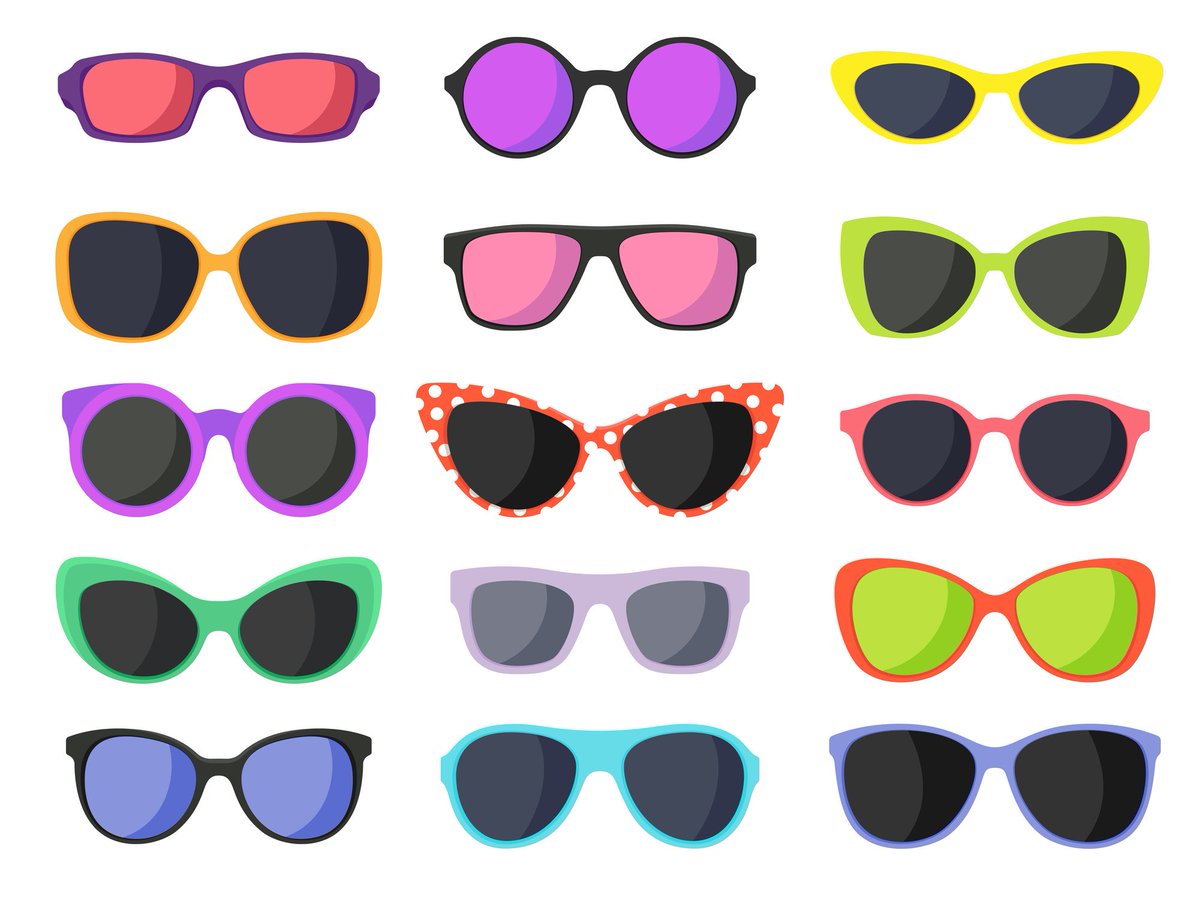
Tips for choosing sunglasses
For most people, a low-cost pair of sunglasses with UVB and UVA protection will do the job.
Follow these safety tips when choosing sunglasses to reduce your risk:
Follow these safety tips when choosing sunglasses to reduce your risk:
- Choose close-fitting wrap around eyewear. Close-fitting or wrap-around sunglasses helps to prevent stray light from entering from the sides.
- Choose dark lenses. Make sure the lenses are dark enough to keep your eyes comfortable, but not so dark that they reduce your vision.
- Reduce glare. If you spend a lot of time outdoors with intense glare from sunlight bouncing off snow or water, you should wear sunglasses that block blue light. Medium to dark lenses with a grey, or slightly brown or green tint, will filter out most blue light.
- Choose scratch-resistant coatings. Most sunglasses have plastic lenses. These lenses are tougher than glass and less likely to shatter. If you buy plastic lenses, look for a pair with a scratch-resistant coating.
- Check for distortion. Check the lenses for distortion by putting the sunglasses on and looking at a rectangular pattern, such as floor tiles. If the lines stay straight when you move your head up and down, and side-to-side, then the amount of distortion is acceptable.
- Get enough UV protection. You cannot tell how much UV protection a pair of sunglasses will provide by their price, colour, or by the darkness of the lenses. Look for a label with UVB and UVA protection.
Amount of UV protection
Manufacturers follow voluntary industry standards when
labelling sunglasses. Sunglasses that comply with industry standards for
UV protection are grouped in three categories:
- Cosmetic sunglasses have lightly tinted lenses for use in sunlight that is not harsh. They block up to 60 percent of visible light and UVA rays, and between 87.5 and 95 percent of UVB rays. These glasses are not usually recommended for daylight driving.
- General purpose sunglasses block from 60 to 92 percent of visible light and UVA rays, and between 95 and 99 percent of UVB rays. These sunglasses are good for driving, and are recommended whenever sunlight is harsh enough to make you squint.
- Special purpose sunglasses block up to 97 percent of visible light and up to 98.5 percent of UVA rays. They also block at least 99 percent of UVB rays, and are suitable for prolonged sun exposure. These sunglasses are not recommended for driving.
- Contact lenses, even those with UV protection, does not provide full coverage for the eyes and the skin around the eyes.
Types of lenses
Sunglasses are made with different kinds of lenses to meet different needs:
- Regular lenses reduce the brightness of everything evenly.
- Polarizing lenses are designed to cut glare due to reflection. This means they are good for driving and outdoor activities in the snow or on water.
- Photochromic lenses change with the intensity of UV light by turning darker when outdoors and lighter when indoors. If you wear these for driving, choose sunglasses that are fairly dark.
- "Flash" or mirror lenses reflect all or part of the light instead of absorbing it. They offer no performance advantage because they scratch easily. You should choose a pair with a scratch-resistant coating.
About ultraviolet radiation and visible light
The sun produces many different kinds of energy. The kinds most likely to injure the eye are:
Most of the damage caused to eyes by UVB and UVA rays happens over a long period of time and cannot be reversed. Sensitivity to UV rays varies from one person to the next.
Blue light is visible light in the blue portion of the colour spectrum. The intense glare of light reflecting off snow or water contains blue light. Your eyes cannot focus clearly in blue light. Some scientists believe that routine exposure to blue light over many years may age the retina and increase the risk of blindness in some people over the age of sixty.
- ultraviolet radiation, which is invisible and is often called "UV rays"
- bright or intense light
- blue light
Most of the damage caused to eyes by UVB and UVA rays happens over a long period of time and cannot be reversed. Sensitivity to UV rays varies from one person to the next.
Blue light is visible light in the blue portion of the colour spectrum. The intense glare of light reflecting off snow or water contains blue light. Your eyes cannot focus clearly in blue light. Some scientists believe that routine exposure to blue light over many years may age the retina and increase the risk of blindness in some people over the age of sixty.
How the sun can damage your eyes
When your eyes absorb ultraviolet radiation and visible
light from the sun, heat or chemicals react in eye tissue. These
reactions can cause permanent damage if the eye's natural ability to
heal itself is overwhelmed.
Different parts of the eye absorb different kinds of UV rays and visible light. For example:
There is some evidence that daily exposure to UV radiation in very bright sunlight over many years may increase the risk of developing cataracts. Cataracts cause a gradual clouding of the natural lens of the eye.
Thank you Health Canada!
Different parts of the eye absorb different kinds of UV rays and visible light. For example:
- The surface layers of the outer part of the eyeball (the cornea and the conjunctiva) absorb UVB rays.
- The lens absorbs mainly UVA rays.
- The retina (the light-sensitive lining at the back of the inner eyeball) absorbs visible light.
There is some evidence that daily exposure to UV radiation in very bright sunlight over many years may increase the risk of developing cataracts. Cataracts cause a gradual clouding of the natural lens of the eye.
Thank you Health Canada!
No comments:
Post a Comment